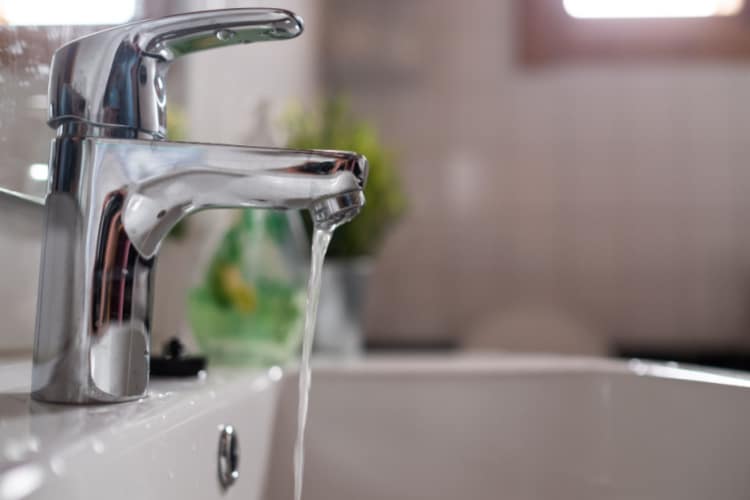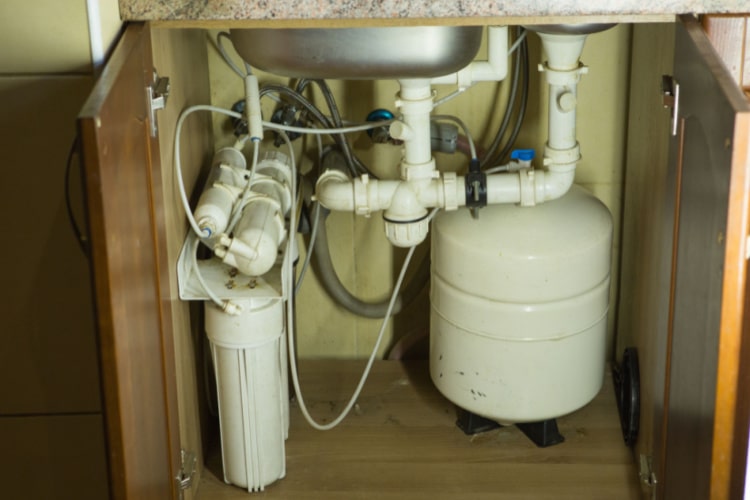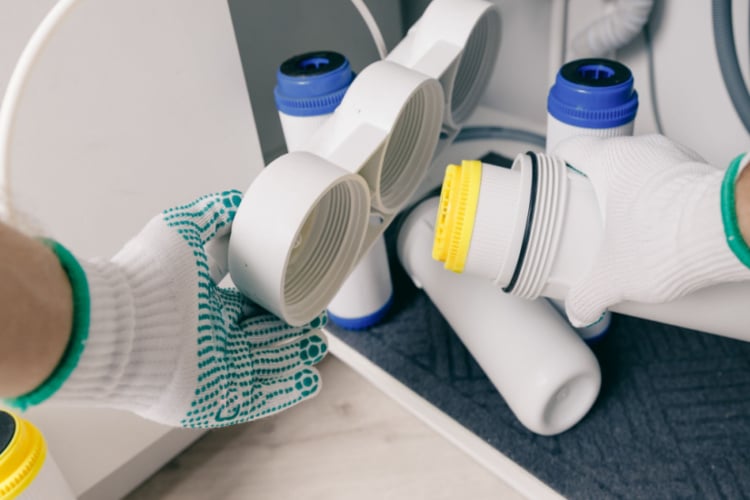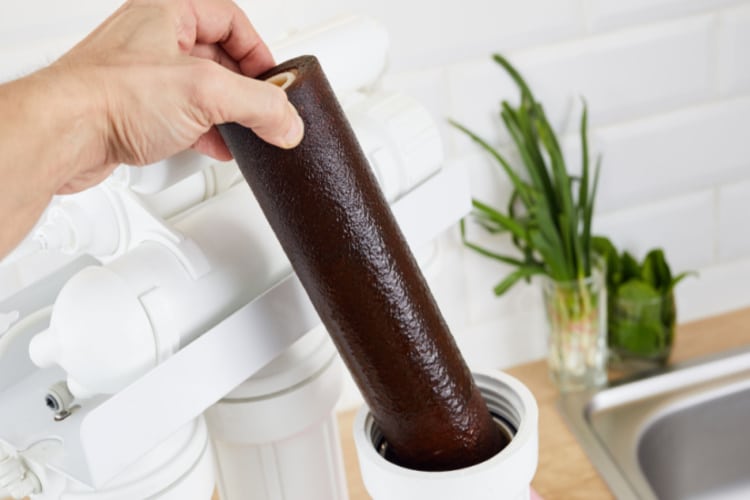Even though reverse osmosis water is considered a safe source of drinking water, if you have an issue with the tank’s bladder, you might want to think twice before taking a sip.
Drinking water from a malfunctioning RO system tastes bad. This, in combination with an apparent water leak, is a sure sign that you are dealing with a ruptured tank bladder.
Here are the five most common tell-tale signs that your RO tank bladder is ruptured:
1. Reduced Water Pressure
One of the most common signs that you might be dealing with a ruptured bladder is low water pressure. Low pressure is usually caused by leaks in the tank and internal ruptures of the bladder.

Having a leak anywhere in your system will immediately drop the water pressure. Here is what you can do about it:
Step 1: The first thing that you should do is check if all the filters are clean.
Step 2: Once you have established that they are, then check the pressure gauge on the tank. The gauge should give you a pretty good idea if the pressure is too low.
Step 3: After establishing that the pressure is in fact lower than it should be, you will want to replace the membranes and see if that stops the leak. Crossing bad membrane off the list before moving on to the tank is always a good idea.
Step 4: After that, make sure that you have enough RO storage space. Your RO system requires a certain amount of available space so that it can perform its operations successfully under optimal pressure levels. In a nutshell, a lack of tank storage space might be the reason why you are getting low water pressure levels.
2. Foul or Salty Tasting Water
Once you troubleshoot the reduced water pressure issue, the next sign that points to a ruptured RO bladder is salty or foul-tasting water. The water will have a salty taste because it is mixing with the cleansed minerals and previous contaminants within the tank. This is mostly caused by the excess minerals that lie in the RO’s piping system.

If the bladder is punctured, you will need to replace it to solve this problem. However, it could just be that the bladder is old and worn out. The more a bladder stays in an RO system, the more mileage it has on it. This means that its rubber will slowly break down until it finally tears.
That said, replacing the bladder isn’t always the answer. If replacing the bladder does not solve the problem, then the issue probably lies with the tank itself.
So, make sure that you aren’t dealing with a faulty membrane or an incomplete installation before replacing the bladder.
3. Water Leaking From The Bottom of The Tank
If there’s water leaking out of the bottom of the tank, there is a real chance that you have a ruptured bladder that needs replacing.

You don’t want to put this off even by a day because the leaking water can mess up your interior and potentially ruin the RO installation setup.
If there is a hole or crack in your tank’s bladder, you will probably be able to locate it right away and take action. Nevertheless, sometimes the leak is not that obvious to the naked eye and may also be caused by poor installation, so make sure to check the tank thoroughly.
Here is how to stop the leakage:
Step 1: Make sure that you turn off the water supply at the source.
Step 2: Start the pump in order to empty the tank from the remaining water.
Step 3: Proceed with removing the screws that hold the casing in place. In the process, take a close look at the bladder and try to see if it is cracked or damaged.
Step 4: If you are able to spot the leak, replace the bladder and reassemble the tank as it was.
4. Excess Air in the RO System
If you notice an excess of air in your RO system, then that might be a sign that the bladder has ruptured. Having excess air can cause a slew of issues, most notably inconsistent water flow with bursts of air in between. It’ll also inevitably damage the membrane.

One of the best ways to remove the excess air is to use a vacuum pump. This simple process can be done at home, and you don’t need to be an expert in order to pull it off.
Step 1: Remove the cap on top of your membrane housing and place a clear hose into the hole where the water typically comes out from.
Step 2: Connect another clear hose to your vacuum pump and begin sucking out all the extra air from your RO system.
While this will fix the issue of excess air in your RO system, if the bladder is ruptured, you’ll still need to replace it.
5. Slow-Moving or Stagnant Water
The bladder is responsible for moving the water from one side of your tank to another. If you notice the water is moving very slowly, that might be a sign that the bladder has ruptured and isn’t doing its job as it should.
If you have a slow-moving tank but can’t find any cracks or holes on either end, then the problem probably lies on the inside of the bladder.

A quick fix would be to remove all components from inside your RO unit (such as filters and membranes) and re-install them into their original positions. This should solve any problems caused by misalignment.
Conclusion
Be mindful of how you are filling your RO tank. If the tank is not filled correctly, the bladder will stretch from the pressure of the water and eventually give in. You will also want to check on the filter and make sure that it does the job as it should.
If the filter is damaged or out of place, then you might as well not even use the water and save yourself the hassle. Lastly, make sure that you turn off and unplug the machine when you aren’t using it.
All of these methods will go a long way toward preserving your RO system as well as its tank bladder.